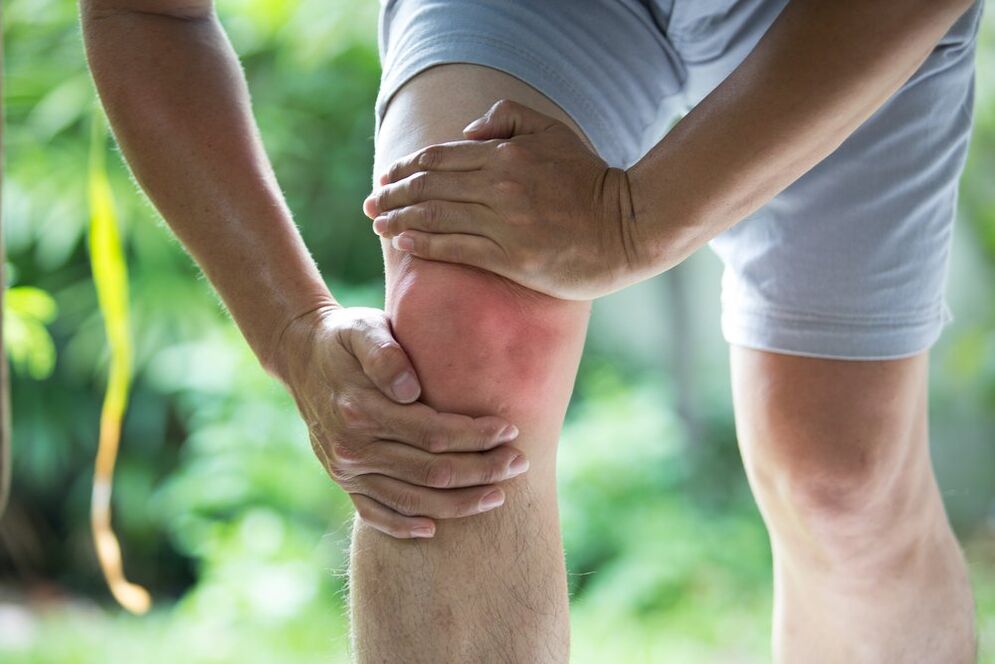Knee arthrosis, or gonarthrosis, is a chronic and progressive disease that often results in disability. Currently, gonarthrosis occupies one of the leading positions in terms of frequency of occurrence among all arthrosis. Often, this pathological process is encountered by middle -aged and elderly people, especially female representatives.
General information and classification
Arthrosis of the knee joint is a disease characterized by progressive degenerative-dystrophic damage to cartilage tissue, and subsequently to other structures in the knee joint area. As we have said, it is this cartilage that changes especially in this disease. However, later the pathological changes spread to the synovial membrane, joint capsule, bone and nearby ligaments.
As statistics show, knee joint arthrosis occurs in about 13 percent of people over the age of forty-five. About 15 percent of people who subsequently suffer a knee joint injury develop the disease. More than 60 percent of patients show a decline in quality of life due to the presence of this pathology. The disability rate ranges from 10 to 21 percent.
In 2011, a team of scientists analyzed the treatment of 300 outpatients with knee arthrosis. At the same time, it was found that among people seeking medical treatment, women predominate 2, 3 times. The average age of the patients was 51 years. It was possible to identify the corresponding pathology in 27. 3 percent of patients. Men who first used the disease had a shorter disease duration and lower severity of arthrosis than female representatives.
As we have said, arthrosis of the knee joint, which has not been treated, often leads to disability of the sick person. This is due to the fact that in the final stages of the disease, the joints are deformed, thus limiting its motor activity. Becoming difficult for the patient to move, he had to use aids, for example, crutches.
Arthrosis of the knee joint is divided into two forms: primary and secondary. The primary form develops when changes in the cartilage tissue of the joint are not preceded by trauma. According to statistics, it accounts for about 38 percent. Secondary forms occur if there is a history of trauma, inflammatory pathology, and so on.
In addition, there are three levels of severity of such pathological processes. In the first stage, the clinical manifestations have a minimum degree of severity, no defects. The second stage is characterized by an increase in symptoms, a moderate limitation of movement in the joints. In the third degree, significant joint deformation is determined.
Causes of the development of arthrosis of the knee joint

The leading cause of knee joint arthrosis is injury. Often, the formation of pathological changes in the joint takes three to five years from the moment of injury, but sometimes the development of earlier arthrosis is also observed. Another common cause is increased pressure on the joints. At risk are people who overweight knee joints while playing sports, who are overweight.
The risk of developing arthrosis with previous arthritis, metabolic disorders and genetic predisposition is significantly increased.
Symptoms of arthrosis of the knee joint
The symptoms of the disease increase gradually. Initially, one notices mild joint pain, which increases during physical exercise. The characteristic clinical sign is the onset of pain during the first movement after prolonged sitting.
Sometimes in the joint area, slight swelling is determined, but often there are no external signs of the disease.
Osteoarthritis of the knee joint, which is not treated, continues to develop. With the second degree, the pain becomes more intense, appearing even with a little physical effort. The pain syndrome disappears at rest, but when the movement begins, it returns again. In the future, the distance of movement at the joints is limited, sometimes there is a rough roughness.
In the third stage, the pain becomes almost constant, sometimes it occurs even at night. A sick person is unable to bend or straighten his legs completely, there are external deformities in the joints. The patient's gait becomes unstable; in severe cases, he can only move with support.
Principles for the diagnosis of arthrosis

As a rule, arthrosis of the knee joint does not cause difficulties in terms of diagnosis. The examination plan includes external examination and X-ray examination. Currently, radiography is the main diagnostic method of this disease. However, it should be noted that in the early stages, radiological signs may be absent, but this does not exclude a diagnosis. If more detailed study is required, in addition to radiography, computed tomography or magnetic resonance imaging is used.
Knee arthrosis: treatment and prevention
With degenerative-dystrophic damage to the joints, treatment can be done conservatively and surgically. Keep in mind that the effectiveness of therapy directly depends on how accurately it is initiated. Of these drugs, non-steroidal anti-inflammatory drugs and chondroprotectors are used. Sometimes intra-articular glucocorticosteroid administration is necessary. The treatment plan is complemented by physiotherapy and therapy exercises.
However, with advanced knee joint arthrosis, treatment is carried out using surgical methods. Often, joint arthroplasty is used, followed by restorative measures.
In 2013, scientists published an article providing data on studies on the quality of life of patients undergoing knee arthroplasty compared with the quality of life of patients receiving conservative therapy for gonarthrosis. A survey was conducted that, for three months after endoprosthetics, people’s quality of life was higher than just with conservative therapy.
The main method of prevention is to avoid injury and excessive physical activity to the knee joint.



















